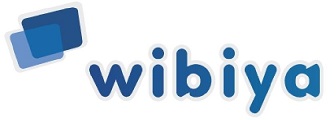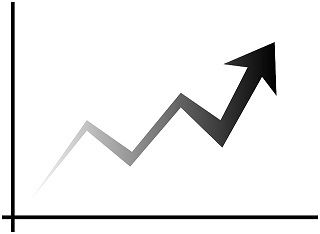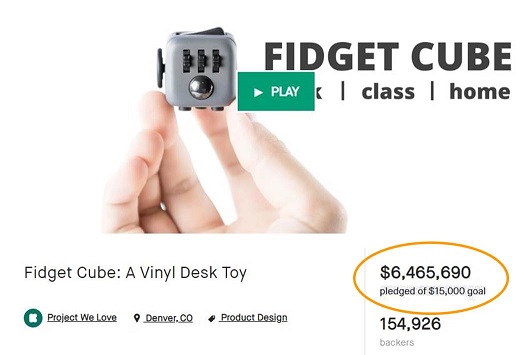


Opportunities surround us all the time, and some people recognize them and know how to capitalize on them. It is possible to teach students to identify opportunities through guidance and training from an early age.
The entrepreneur:
An entrepreneur is a person who is attentive to the environment, constantly scans it, and when they identify an opportunity for success or a chance to make a positive impact, he/she turn it into a venture.

The following story clearly illustrates the meaning of identifying opportunities:
The story is about two businessmen coming to a new continent to sell shoes.
Half an hour later, they both call their wives.
One says, 'My dear wife, don't worry, tomorrow I'm getting on a plane back to you.' No one here wears shoes. They're all barefoot.
The other says, 'My dear wife, I am very sorry, but I will not be able to return in the coming year.' There is a fantastic opportunity to sell shoes here; everyone goes barefoot.
*****
In the video, "Let's Raise Kids to Be Entrepreneurs," Cameron Herold, an entrepreneur since childhood who has coached entrepreneurs for the past twenty years, says that at an early age, encouraged by his father, he had identified business opportunities and realized that his destiny was to be an entrepreneur.
When it comes to children, Participants in the Entrepreneurship for Kids Program learn to identify opportunities that will drive them toward success on both a personal and financial level.
Here is an example of a venture born from identifying an opportunity. A case that Galit Zamler knows closely.
This is the story behind the Touch Date app:
"As a couple who loves discovering new places, diversifying and experiencing new things, we were always looking for special corners and interesting attractions in the country.
Every time we came across something like this on Instagram, we would write down the name of the place on a note and put it in a jar. Once a week, we would pull out a note and try out a new and exciting place.
When we told friends about the idea, they got excited and asked us to make them such a jar too - and to recommend worthy places for them to go to. That's basically how Touch Date was born.
We decided to turn the idea into a digital platform so that everyone could discover the most worthwhile places in the country, diversify, and experience new things without having to think too hard.
Today, through the website, you can randomly draw a personalized date, according to your preferences: food, nature, attractions, or even a home date.
Additionally, you can save places you want to visit to your favorites, and mark where you've already been."
The entrepreneur:
The entrepreneur knows how to identify opportunities for success. Sometimes, a problem can also be an opportunity, and one can only discover it after examining the issue from a different angle.
Example:

The milk substitute "Not Milk" provoked the anger of dairy producers, who filed lawsuits for consumer deception. They claimed that the product uses the name "milk" for a product that doesn't contain milk solely to attract consumers who are familiar with the term "milk."
The company translated the lawsuits and the emerging difficulty into an opportunity: It published excerpts from the lawsuit documents across various media outlets.
This move was an absolute success, with many supportive comments in media publications and high demand for the milk substitute.
Their quick response enabled them to rise to the challenge without being intimidated by it.
Instead, they turned the difficulty into an opportunity to build consumer awareness.
Another example:
In the following videos, Steve Jobs, a talented and respected entrepreneur, discusses the path and process he went through to achieve success.
In the past, these videos were shown to students who participated in the EFK program as we studied the module on how to make difficulty an opportunity. Most often, students were amazed. They couldn't believe that Steve Jobs grew up as an adopted child, did not earn a college degree, was fired from the company he founded, and, despite everything, was very successful in his field and is considered a global symbol of success.
Part one:
Part two:
Another example:
IAI CEO, Itzhak Nissan, once described that the transformation of Israel into a superpower of UAVs (unmanned aerial vehicles) began with the closure of the Lavi project:
"We took the end of the Lavi very difficult. After we had recovered, we decided to apply the technologies we had developed to other areas, such as UAVs, and we became a leader in this field. We don't stop thinking, improving, and expanding."


Ray Kroc, who is affiliated with the McDonald's chain, began his career as an entrepreneur when he invented a machine to make milkshakes. To sell the machines, he visited stores throughout the United States and offered them to the shop owners.
The moment when he saw an opportunity for another initiative was when he entered to sell his wares at the McDonald's Brothers' burger restaurant. After attending the restaurant several times, he realized that the fast-food concept had great potential.
He made the move to the hamburger venture gradually. Initially, he acquired a franchise for a single branch, and then expanded it until he purchased the entire chain from the founders, transforming it into an international fast-food chain.
Another example:

The Israeli entrepreneur, Dror Ceder, founder of Wibiya and vice president of Conduit, shared his story at the entrepreneurship club of the Open University. He said that he worked with his partners on the project for two years, and two days after the launch, they decided to kill the project and move to another one. They did it due to an error and the crowd's response to it.
Watch the video (In Hebrew)

Ideas for projects can also arise from identifying trends. One can utilize tools and research for that purpose. For example, Google Trends allows identifying trends in different states and in various fields around the world.
Besides, it's also advised to be attentive and aware of our surroundings. Sometimes, as a result of being alert to our surroundings, we can identify the beginnings of trends that haven't yet received attention from the mass media.
The ability to recognize trends in time and capitalize on them can lead to significant success.
Here are a couple of examples of trends that entrepreneurs had noticed and leveraged:
Coworking spaces - WeWork was the first to recognize the need for entrepreneurs to work with like-minded individuals, rather than in a garage or at home. Then, many other companies identified the trend and offered their shared spaces. Thus, we can find shared workspaces in many cities around the world, and everyone is trying to differentiate themselves in some way.
ADHD - Whether more children and people have attention and concentration problems or there's just more awareness of the issue, we see an abundance of various solutions to this matter, such as books, medications (Ritalin), lectures and workshops for parents, care centers, designated products, etc.
The Fidget Cube, which enjoyed the trend of the ADHD trend, became a massive hit for a short period. The entrepreneurs raised money from the masses for production and marketing through the Kickstarter website. The project achieved significant success, as evident from the screenshot below. The entrepreneurs initially planned to raise $ 15,000 and ultimately managed to raise $6,465,690.

Another product that achieved significant success in line with this trend was the spinner. Children and people all over the world bought spinners and swirled them for pure enjoyment and /or to concentrate.
Even if these products are no longer as popular as they once were, the attention and concentration problems persist, and the market is seeking practical solutions to address these issues.
A trend in a completely different area is the growing interest in artificial intelligence. This is one of the leading trends worldwide. Entrepreneurs who successfully identify the required applications for this trend are on their way to success.